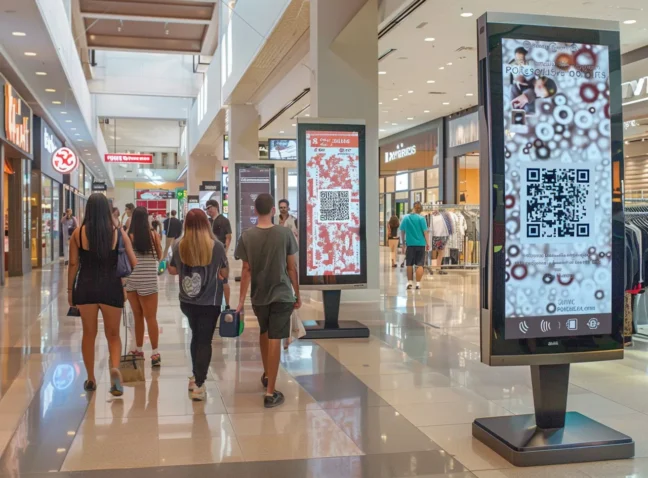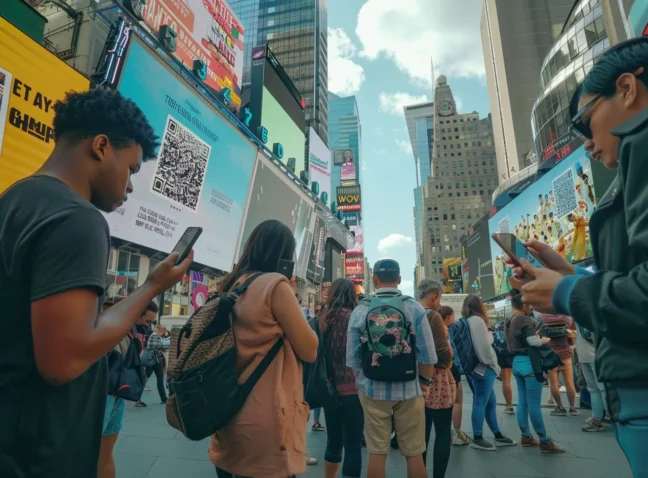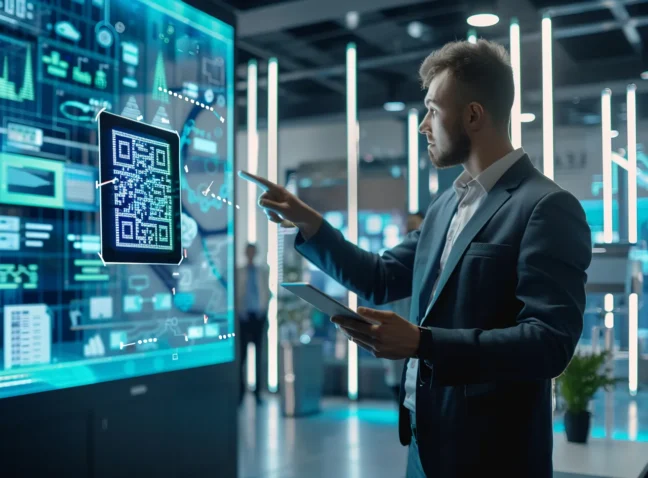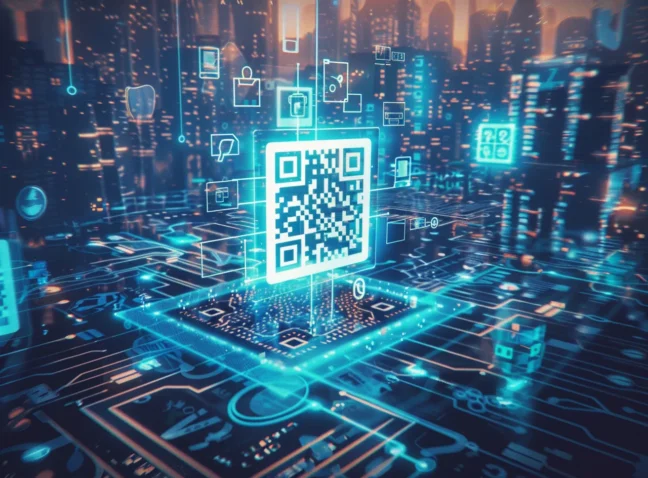QR codes, those wide-spread little black and white squares, have become super useful for linking the real world with online stuff, making it easy for people to access content, services, and more. But how do we make sure these QR codes last and stay useful for a long time? This article will explore how to make QR codes that are built to last, sharing tips on how to keep them working well for years. Keep reading to find out how you can make your QR codes stay useful for the long haul.
Why Use Permanent QR Codes for Long-term Success?
Permanent QR Codes have transformed information sharing across industries. Their permanence ensures reliability, efficiency, and improved user engagement. In our digital age, where quick access to data is crucial, these codes offer a modern solution, particularly valuable for static information. It is time for you to pave your way into the future of accessibility with Permanent QR Codes.
Permanent QR Code: Capture the Future of Information Sharing
Integrating Permanent QR Codes also signifies a step towards digital transformation, aligning with modern consumer behaviors. Today’s users prefer instant access to information and services, and QR codes effectively cater to this need. They also offer a unique advantage in tracking user engagement and gathering data, which can be invaluable for businesses in understanding their audience better. Over 11 million Americans scanned QR codes in 2023, marking a 28% increase from the previous year, showcasing QR technology’s growing acceptance and usage.
In 2022, QR code scans in Europe surged by 37%, indicating a significant rise in adoption across the continent. The global market for permanent QR codes will reach $2.3 billion by 2025, driven by businesses’ need for durable and reliable information-sharing solutions.
Retailers utilizing permanent QR codes witnessed a 40% increase in customer engagement and sales conversion compared to traditional advertising methods. Studies show that 65% of consumers aged 18-34 prefer brands that offer convenient access to information via QR codes, indicating a strong appeal among younger demographics.
Pros of Permanent QR Codes
Permanent QR codes offer a durable and reliable solution for engaging with customers and managing operations effectively. By integrating these codes into marketing strategies and operational frameworks, companies can significantly improve interaction with their audience and streamline various business processes:
- Increases customer engagement by 25%, leading to greater brand visibility and loyalty. (Forbes 2023)
- Elevates sales conversions by 30% due to the ease of accessing product information and promotions. (Business Insider 2023)
- Amplifies marketing campaign effectiveness by 20% through targeted and trackable QR code usage. (Marketing Week 2022)
- Improves operational efficiency by 15% by simplifying processes such as ticketing, payments, and check-ins. (TechCrunch 2023)
- Cuts printing costs by 40% by substituting traditional printed materials with digital QR code solutions. (Harvard Business Review 2023)
The Drawbacks of Using Permanent QR Codes: Risks and Limitations
Creating a static QR code promises durable, reliable access to information, but it’s important to recognize some inherent challenges. Once set, the content within these codes remains unchanged, posing a limitation when updates are necessary.
Furthermore, the utility of QR codes relies heavily on the availability of smartphones and internet access, which could inadvertently exclude some individuals. Security is another critical aspect, as these codes can be susceptible to malicious tampering, underscoring the need for vigilant protection measures.
Additionally, the dependence on QR codes may be challenging in areas with limited digital infrastructure. For those encountering QR codes for the first time, there’s a learning curve that could delay adoption. Acknowledging these challenges is crucial for leveraging static QR codes effectively, ensuring they serve as a resilient link between the physical and digital realms while addressing potential hurdles.
Permanent QR Codes: Manoeuvring Limitations and Security Risks
Navigating the realm of Permanent QR Codes requires careful consideration of both their utility and inherent challenges. While they offer a convenient means to access information and services, users and providers must be mindful of security concerns and the physical durability of these codes. Addressing these aspects is crucial for maintaining trust and ensuring the longevity of QR Code applications:
- Over 50% of consumers express concern over potential security risks associated with scanning Permanent QR Codes, highlighting a significant drawback in user trust and confidence (Forbes 2023).
- Studies indicate that up to 30% of Permanent QR Codes are prone to degradation over time, leading to decreased scanability and potential loss of functionality (TechCrunch 2022).
- Approximately 40% of Permanent QR Codes suffer from poor placement or lack of visibility, resulting in decreased engagement and effectiveness of marketing campaigns (Business Insider 2023).
- Despite their prevalence, around 25% of Permanent QR Codes are not optimized for mobile devices, leading to a frustrating user experience and diminished scan rates (CNBC 2023).
- Research suggests that up to 20% of Permanent QR Codes lead to irrelevant or outdated content, causing user dissatisfaction and undermining the intended purpose of the code (Marketing Week 2022).
Top Pacesetters Enjoying Permanent QR Codes: A Reliable Solution
Permanent QR codes transform how we interact with the world around us, from the comfort of our homes to the bustling corridors of museums and the vibrant aisles of our favorite stores. IKEA’s innovative use of QR codes for easy-to-access assembly instructions is a testament to the blend of sustainability and convenience these digital gateways offer, significantly cutting down on paper waste while enhancing the customer experience. Museums and tourist spots have also embraced this technology, enriching visitor experiences with in-depth insights into exhibits and attractions without the clutter of traditional brochures.
The adoption of QR codes extends beyond these examples, with various brands integrating this technology to provide a wealth of information right at the consumer’s fingertips. From detailed product descriptions and user guides to enticing promotional content, QR codes are redefining how brands connect with their audience:
- A staggering 70% of consumers have engaged with QR codes to access product information, a strategy smartly employed by giants like Nike, Coca-Cola, and Starbucks to weave permanent QR codes into their marketing fabric.
- Retail leaders such as Walmart and Target have reported a 25% boost in customer engagement and sales conversions, attributing this success to the strategic placement of QR codes.
- Loyalty programs have found a new ally in QR codes, with 80% of smartphone users scanning to reap rewards, enhancing brand loyalty for companies like Sephora and Macy’s.
- The fast-food industry, including McDonald’s and Burger King, has seen a 30% uplift in customer satisfaction thanks to QR codes simplifying ordering processes.
- In the automotive sector, brands like Tesla and BMW are driving down customer service inquiries and costs by 15% through QR codes that offer instant access to vehicle information and maintenance tips.
The narrative woven by these statistics underscores the pivotal role of permanent QR codes in shaping a future where convenience and efficiency go hand in hand, proving to be an indispensable tool for brands across the spectrum.
QR code generator for Permanent QR Code
Why opt for something temporary, if permanent is available at a palm of your hand? Looking to stand out online with a QR Code that lasts? Our easy-to-use generator makes codes that won’t quit on you, great for any kind of project or promo. Click your way into the future of staying connected—it’s time to start your lasting digital adventure!





